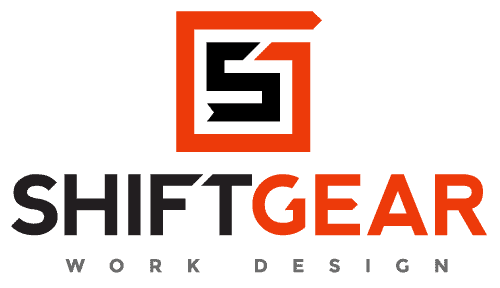The ShiftGear and WorkLab@MIT teams spent last week in Guanajuato, Mexico at our 3rd Annual International Leader’s Forum. We saw several really nice applications of the Dynamic Work Design approach and all of our partners are making progress in "Designing Work That Works." As always, we learned several new things and left with lots of new ideas. I’ll highlight some of these in future posts, but for right now, I will focus on one of our catch phrases, “you suck.”
“You suck” is a big part of Dynamic Work Design’s origin story. When Don Kieffer was a Plant Manager at Harley Davidson’s Capitol Drive engine plant, some Ford Motor Co. executives asked if they could tour his facility as part of a lean production training session. Don immediately said yes. His facility hosted thousands of tours a year, and he was feeling pretty good about the state of his operation (Harley had been an early adopter of lean production techniques.) The Ford execs sent over an “advance team” to prepare for the visit. After several hours of auditing, they returned to Don’s office with bad news: Ford wouldn’t be using Harley for the tour because, in the words of one of the auditors, “you suck,” and “you don’t know a thing about lean manufacturing.” It was a tough message to swallow, but it started Don’s personal deep-dive into the question of how you design effective work for normal human beings.
Since then, “you suck” has become one of our rallying cries, a not-so-subtle form of shock therapy that we use in our teaching to help people see that, though they think they are pretty good leaders and managers, there are often significant, but unseen improvements sitting right in front of them. Don walked by several big opportunities in his plant every day for years before a seasoned Toyota consultant helped him understand the true magnitude of the opportunity.
Later, ShiftGear Partner and Dynamic Work Design power user, Sheila Dodge, added her own twist, regularly finishing the presentation of her stunningly successful work with “we still suck.” A powerful reminder that even after completely transforming her operations (you can read about her team’s work here), there is still a lot more opportunity. The wisdom that lies within “you still suck” is one that has supported Toyota and other high-performance organizations for decades: no matter how good you are, you can always you get better. And, appropriating a metaphor from my long ago bike racing days, "If you aren’t moving forward in the pack, then you are probably sliding to the back."
Dynamic Work Design is a system that helps you discover the “next best way” to do your work, but it only works if you believe that, no matter how good you are, there is always a better way of working. The lesson underlying “you suck” is thus critical to success. But, that particular version of it doesn’t work in Mexico.

Gifts for our Leaders Forum Attendees
During our visit for our Leaders Forum, one of our clients politely mentioned to us that the people who work in his factory were pretty offended by “you still suck,” and our continued use of it was proving to be a real impediment to success. We were pretty embarrassed, but, after the fact, not too surprised. I have taught international students at MIT for many years and the first rule of success for non-English speaking audiences is to give up on your jokes. Humor is deeply cultural and often doesn’t translate well across languages. Our use of “you still suck” is actually kind of complex and might even border on the Zen: If you run a complex operation, you are probably missing big opportunities to improve your work, and, therefore, you suck; but, in accepting that you suck, you open the path to sucking less; but the moment you think you no longer suck, you suck again, and.… you get the picture. Not surprising it didn’t translate real well to Spanish.
The distinction between principles and practices is the bedrock of the ShiftGear approach. From the first day Don and I met, we have tried to move between the world of theory and the world of practice. We want to offer tools and approaches that work, and we want to know why those tools and approaches work based on the underlying science. For example, using yellow tape to signal a failed job on a moving assembly line is a practice. And humans thriving in tasks that provide clear, unambiguous feedback is a psychological principle. Yellow tape is a way to capitalize on that principle, but it is only one of many.
Your mission (should you choose to accept it) is to take the principles of Dynamic Work Design and adapt them to your unique challenges and culture. WorkLab@MIT exists to identify and clarify these principles. ShiftGear exists to equip you with a deep understanding of those principles and help you use them effectively. We have helped create dozens of Visual Management boards for our clients, but I doubt any two of those are exactly alike. They all, however, help managers reconcile and align activity and intent (principle #1), engage in structured problem solving (principle #2), ensure optimal challenge (principle #3), and connect the human chain (principle #4).
So don’t be afraid to change any tool or practice to fit your organization and its current challenges. Just make sure that it’s still consistent with the underlying principles. Toyota has increasingly replaced the famous andon (or stop) cord with a stop button. The technology may be different, but the principle is exactly the same.
And to our Mexican colleagues, apologies for our insensitivity. When it comes to cross-cultural applications of Dynamic Work Design, we still suck!
